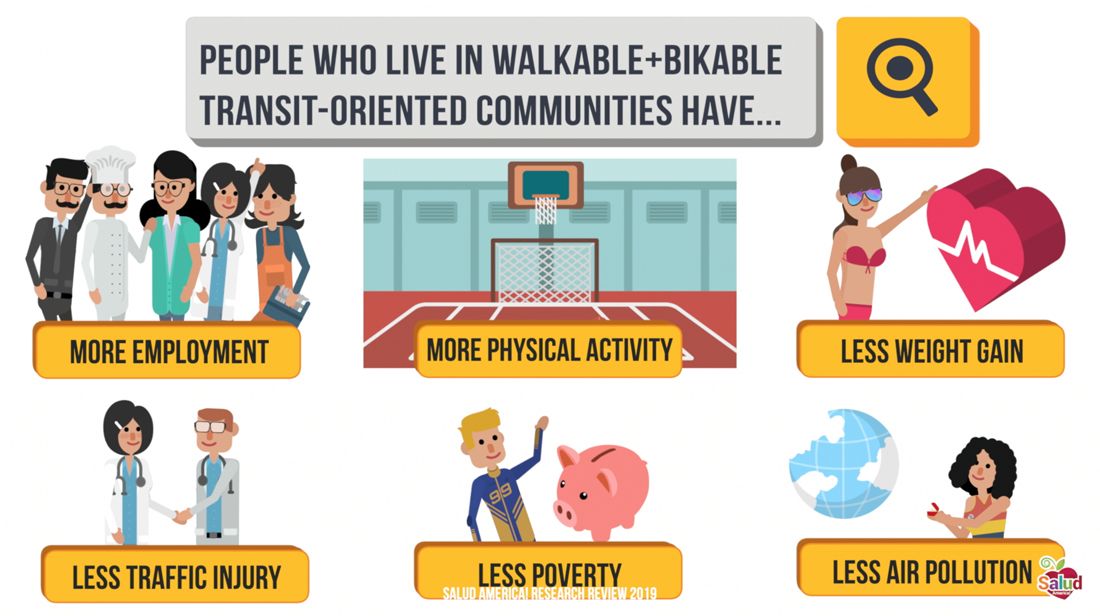Latinos face unaffordable housing, unreliable public transit, and lack of green space
These inequities limit Latinos’ access to health-promoting assets. But policies and practices are emerging to create affordable housing, reliable public transit, and more green spaces to improve Latino health equity.
This is a guest blog post courtesy of Salud América.
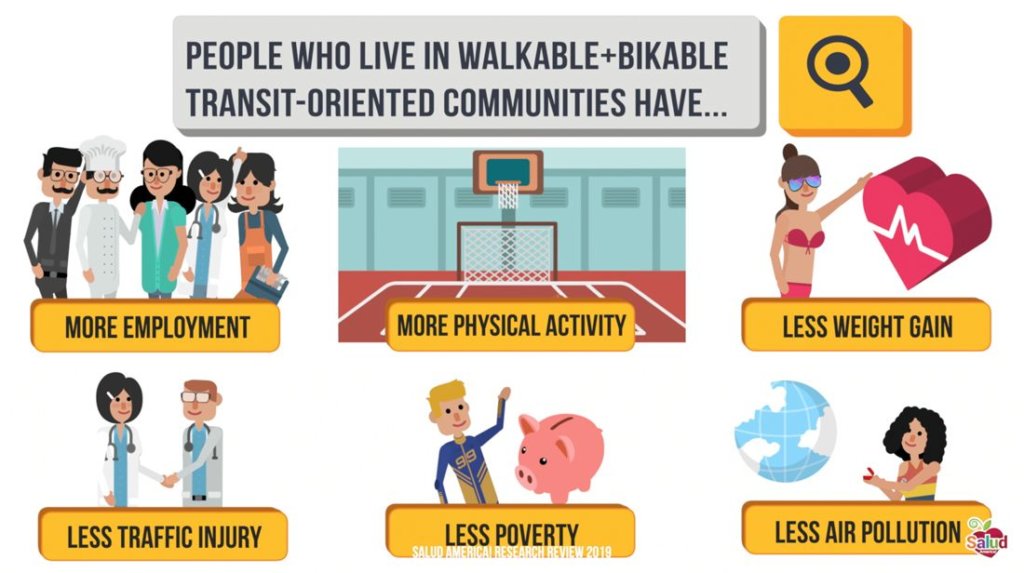
Where you live determines how healthy you are.
Keep up with the latest from UnidosUS
Sign up for the weekly UnidosUS Action Network newsletter delivered every Thursday.
Sadly, U.S. Latinos face unaffordable housing, unreliable public transportation, and a lack of green space, which contributes to health inequities, according to a new research review from Salud America!, a national network for health equity at UT Health San Antonio.
The new review, The State of Latinos and Housing, Transportation, and Green Space, examines available science on Latino access to affordable housing, public transit, and parks.
The review also highlights strategies and policies to improve neighborhood health equity, where everyone has a fair and just opportunity to achieve the best health possible.
“Across the United States, Latinos often lack access to affordable housing, safe and reliable transit, and parks and green space that are necessary to fully thrive and achieve health equity,” says Dr. Amelie G. Ramirez, lead author of the research review and director of Salud America!.
“It is critical to address these underlying social, economic, and environmental factors that contribute to health than to address the health disparities directly if we are to hope for long-term changes in Latino health and well-being,” she adds.
Below are some key findings from the research review.
LATINOS AND HOUSING
Latino families are burdened by high housing costs.
- The number of Latinos who are “housing cost burdened,” spending 30% or more of household income on housing costs, grew from 42.4% in 2000 to 56.9% in 2015.
- More Latinos rent their homes (54%) than their White peers (28%).
- Latinos also experience high rates of eviction and involuntary displacement.
Increasing affordable housing options can improve Latino communities.
- Cities and community partners are increasingly pushing for more affordable housing, using tools like eased zoning standards, buying land to give to affordable developers, and setting up affordable housing trust funds for future projects.
- Localities also can help keep renters in their homes with rental housing assistance or repair programs.
Latinos benefit from transport-oriented development in their neighborhoods.
- These developments improve affordable housing near public transit, jobs, and other amenities (retail, civic, social, etc.).
- Successful transit-oriented developments in Latino neighborhoods in California have engaged advocates to push for affordable housing. They also added health care, child care, and plaza space, promoted public art, and formed groups to protect local interests.
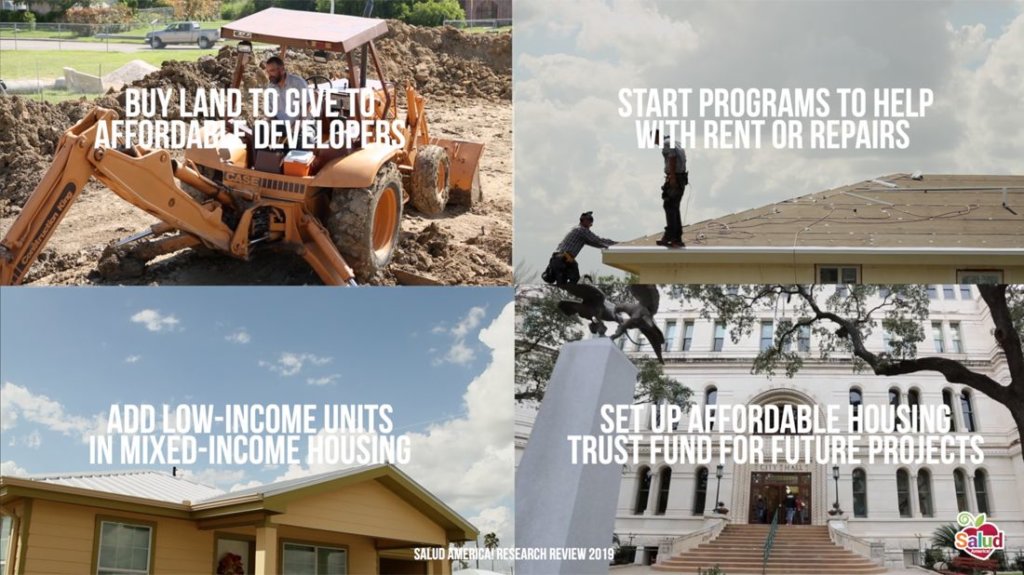
LATINOS AND TRANSPORTATION
Latinos face big transportation challenges, from cost to reliability.
- Latinos face longer commutes than their White peers (26.9 minutes vs. 25.1 minutes).
- Yet Latinos are less likely to have access to a car (12% vs. 6.5%), and more likely to rely on public transit (27% daily/weekly usage vs. 14%).
- Latinos often report bus routes are unreliable, infrequent, or even unsafe.
Improving public transportation can improve Latino quality of life.
- People who live in walkable, bikable, transit-oriented communities have increased employment rates and physical activity, decreased weight gain, traffic injuries, poverty, and air pollution exposure.
- Cities and local groups can create equitable public transit through income-based bus fare reductions, improved scheduling with after-hours service, increased bus frequency, and routing improvements where Latinos reside.
- Several studies show that Latinos desire public investment in safe sidewalks to normalize walking, and greenways as safe routes to school and public transportation, which contribute to social cohesion in neighborhoods.
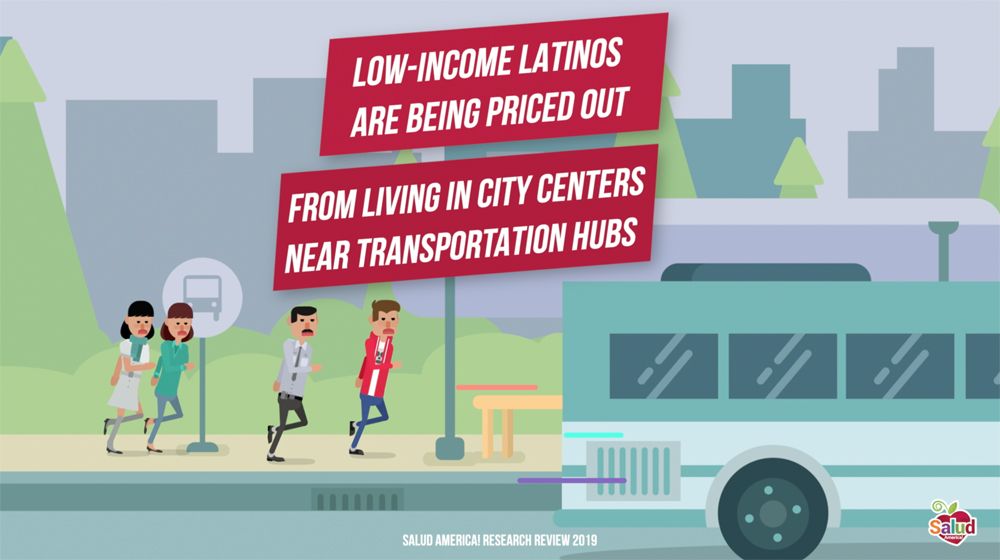
LATINOS AND GREEN SPACE
Latino communities lack safe, accessible, and culturally relevant green space.
- Only one in three Latinos live within walking distance (<1 mile) of a park. Only 19% of Latino children have access to recreational green spaces close to their neighborhoods, compared to 62% of their White peers.
- Park-less Latinos miss out on space for physical activity, social interaction, and stress reduction.
- Top barriers to Latino access to green spaces are distance, a lack of street, sidewalk, and transit connectivity, a lack of park programming and maintenance, and a lack of equitable funding for green spaces.
Green space initiatives that account for community needs can improve Latino physical and mental well-being.
- Latino kids who interact with nature early in life have cognitive changes, which improve behavioral development.
- When green space is accessible in Latino neighborhoods, Latino kids are more physically active in parks.
- Green space initiatives are effective when they meet Latino community needs: using a community park as a hub for neighborhood events, social services, and connections to health care, repurposing vacant lots into play spaces, and creating greenways as safe routes to school, public transit.
- Maintenance of existing green spaces and Latino-focused programming can increase perceptions of safety, ownership, cultural relevance, and “belonging.”
“Community leaders should prioritize investment in affordable housing, public transit, and green spaces in neighborhoods where the highest proportions of Latinos and low-income individuals reside,” Ramirez says.
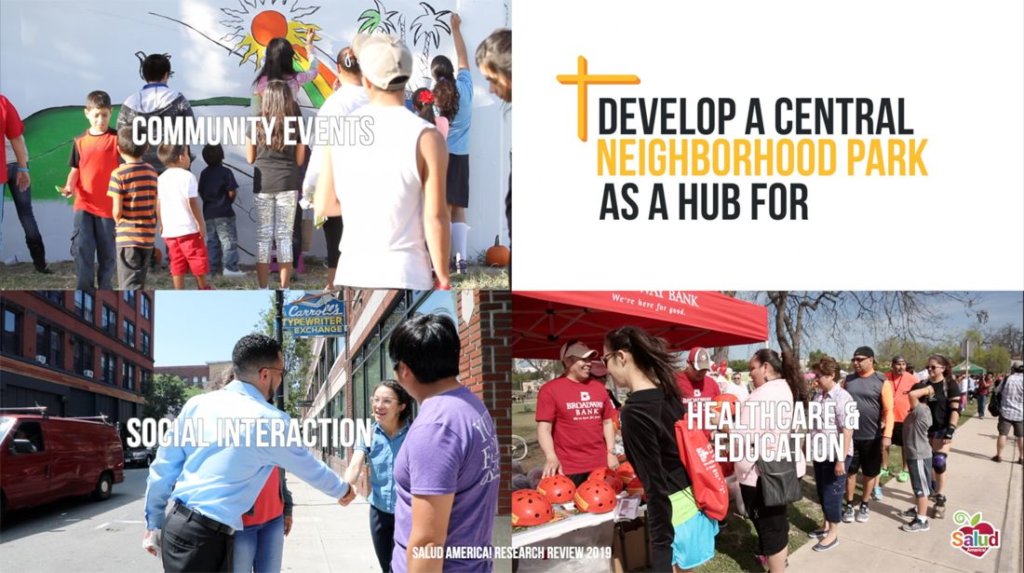
THE NEXT STEPS
To showcase opportunities for equitable change, Salud America! is publishing “Salud Hero” stories of people who have led many of the strategies for change highlighted in the research review.
For example:
- Minerva Perez beats “transportation bullies” with free rides to the doctor in New York.
- Rey Saldaña is boosting bus service in vulnerable parts of San Antonio, Texas.
- George Block literally opens the gates for families to visit parks in San Antonio, Texas.
- Cam Juarez enables Latinos to visit national parks in Arizona.
- Janet Houser cultivates healthy living and affordable housing in Colorado.
Ramirez hopes people use these stories, and the new research review and its videos and infographics, to drive awareness and make the case for change in their communities.
“These are the kinds of changes that form the foundation for healthy, active neighborhoods that allow further access to jobs, health and educational resources, and social networks, all of which play a role in improving health equity for Latinos and all people,” Ramirez says.
RELATED CONTENT
